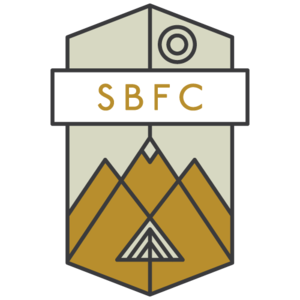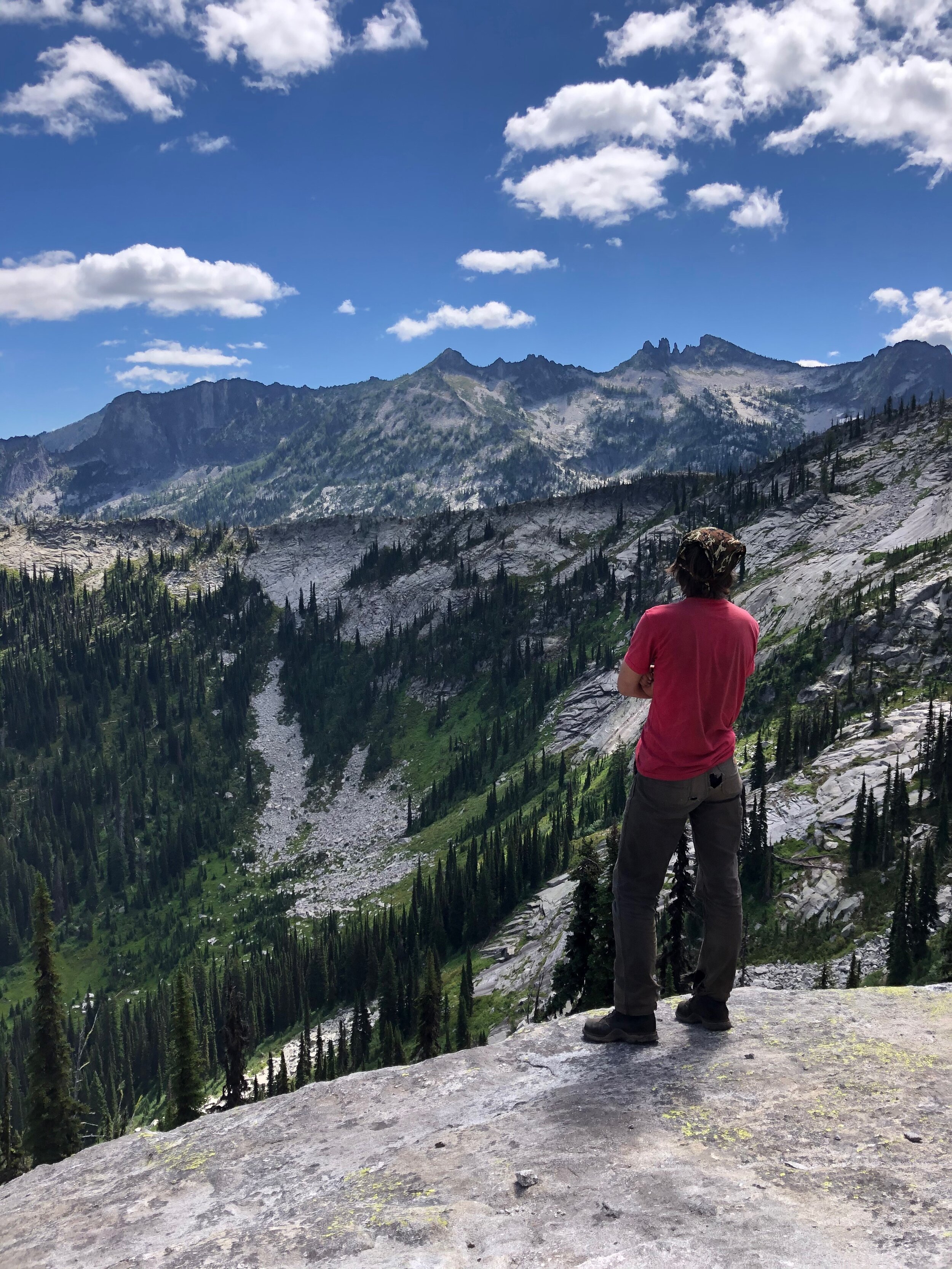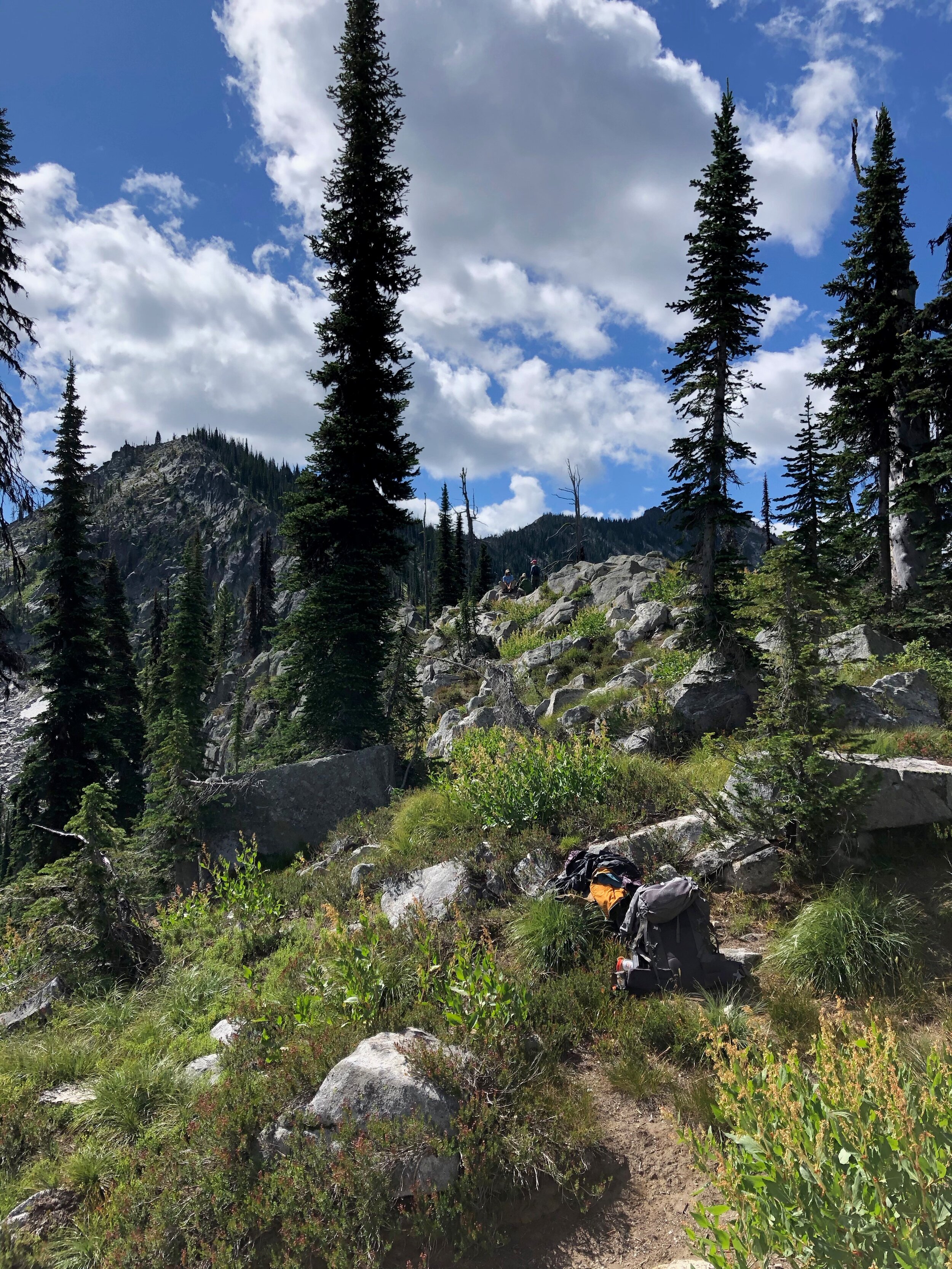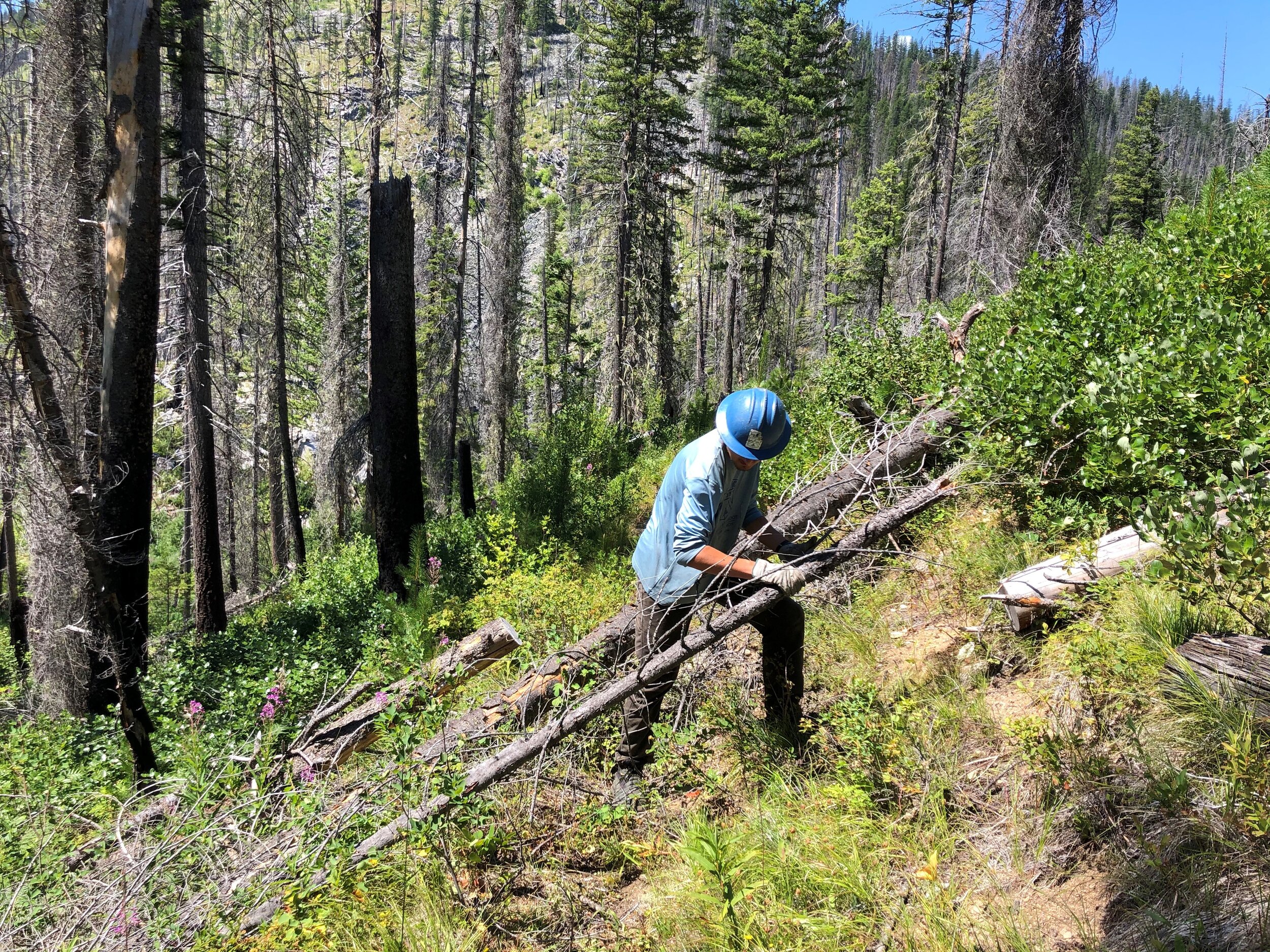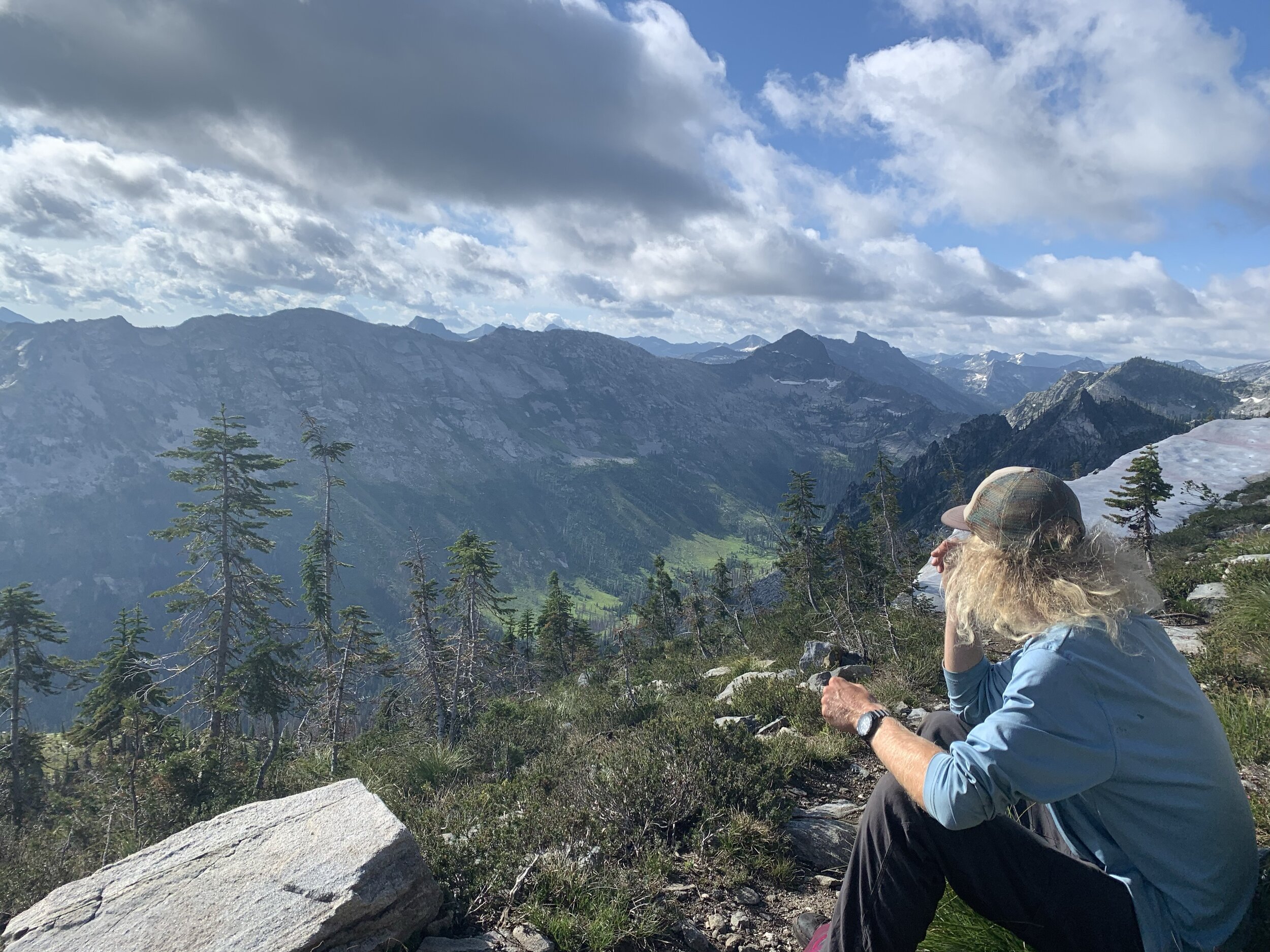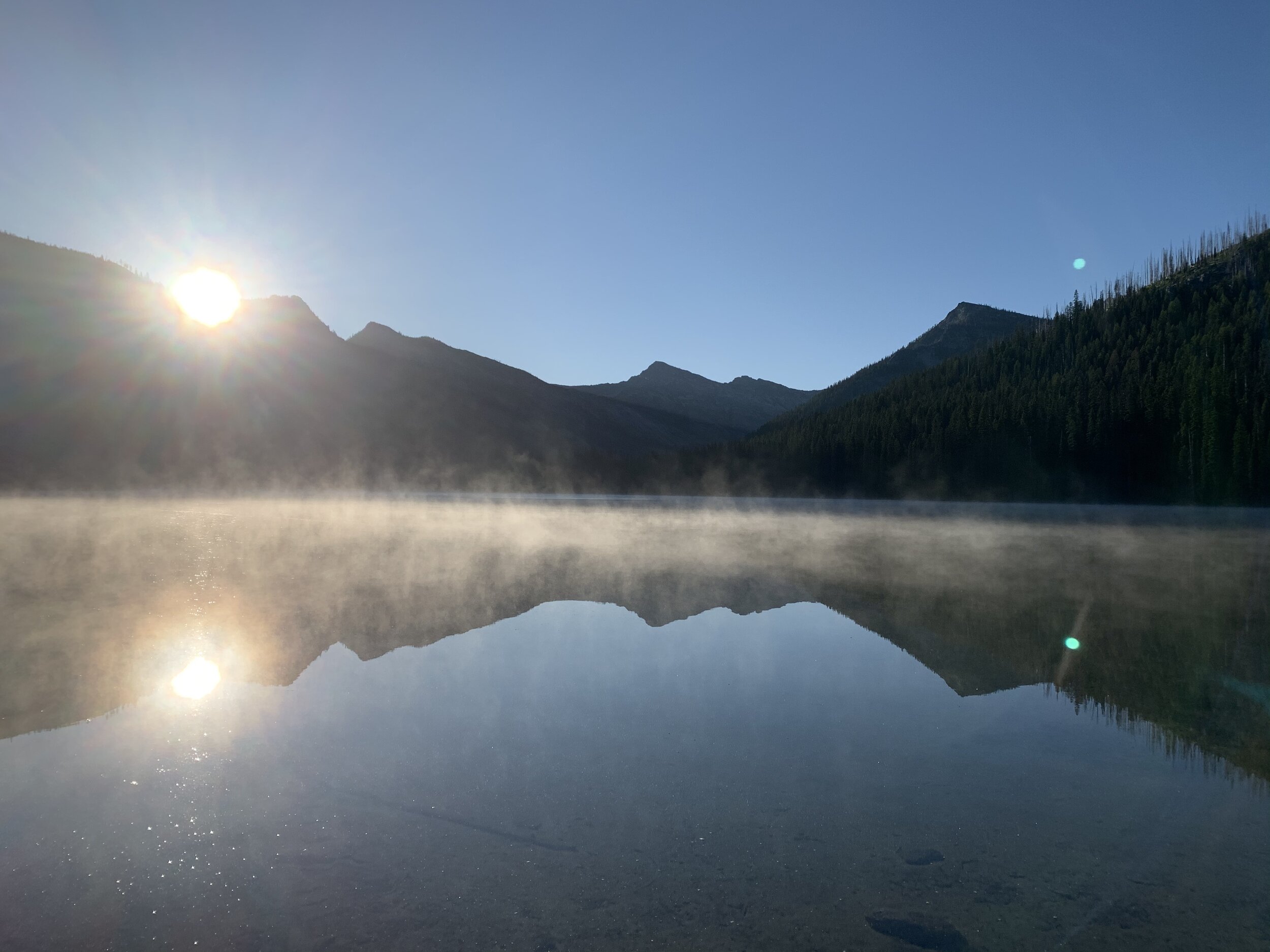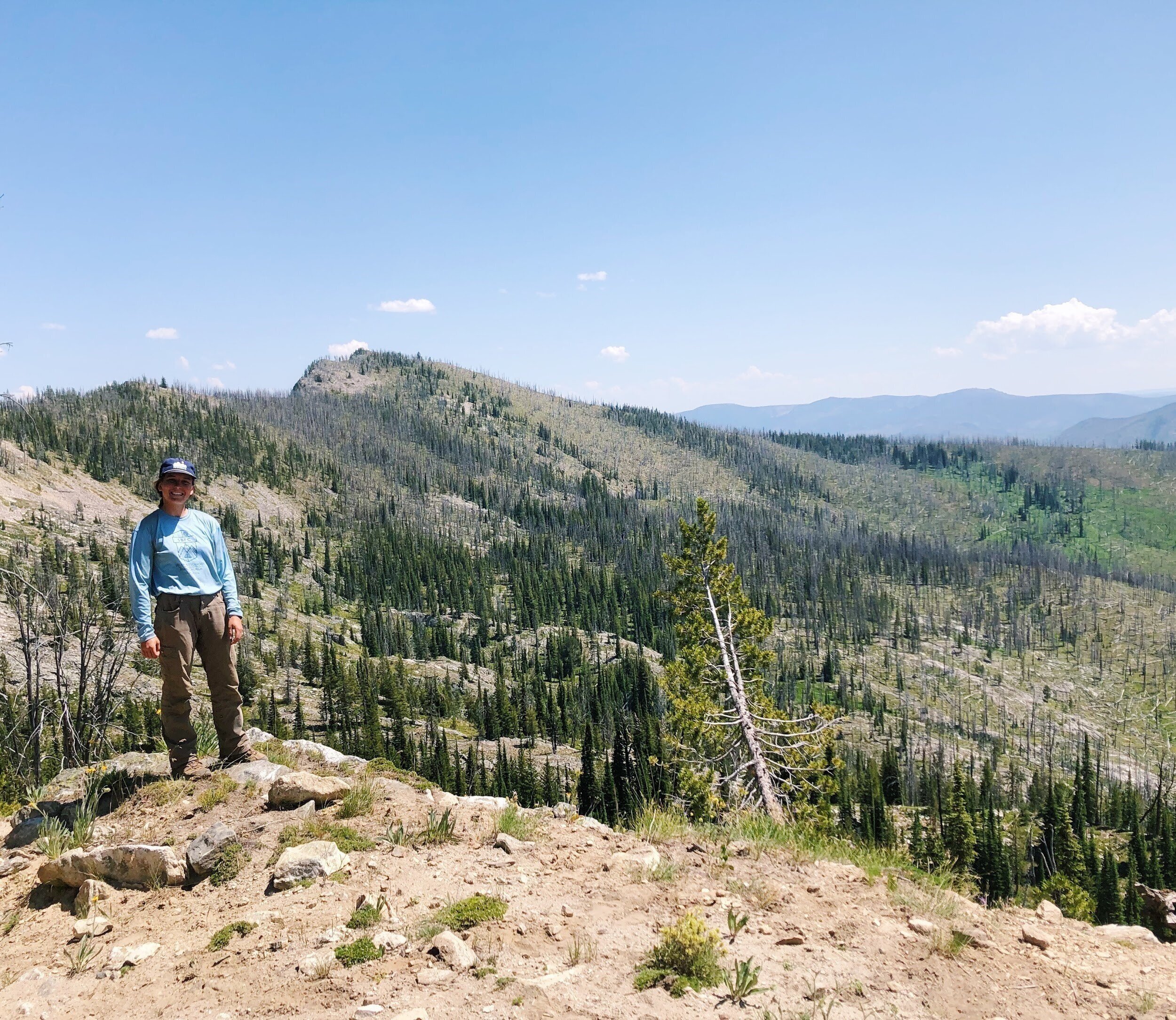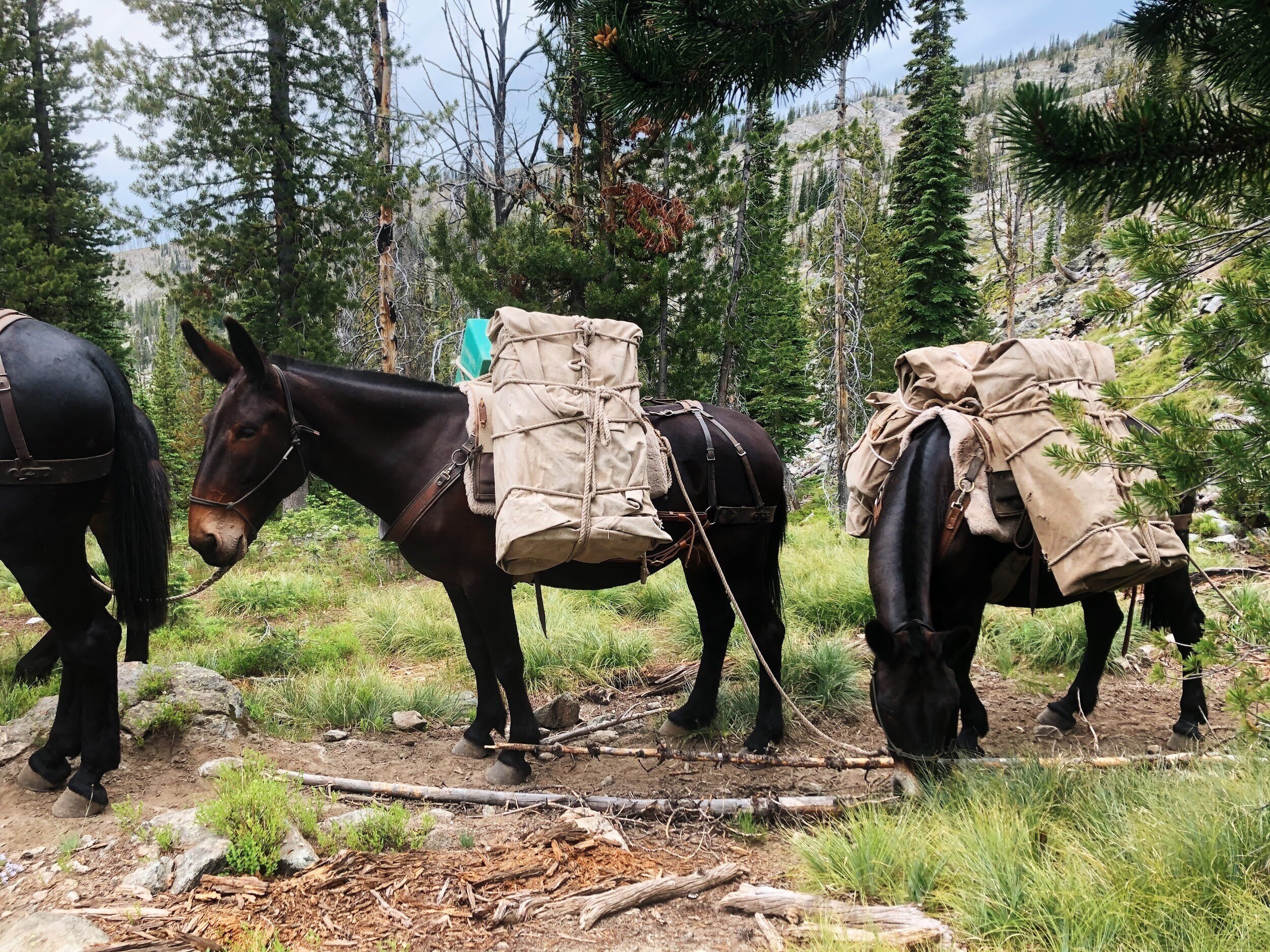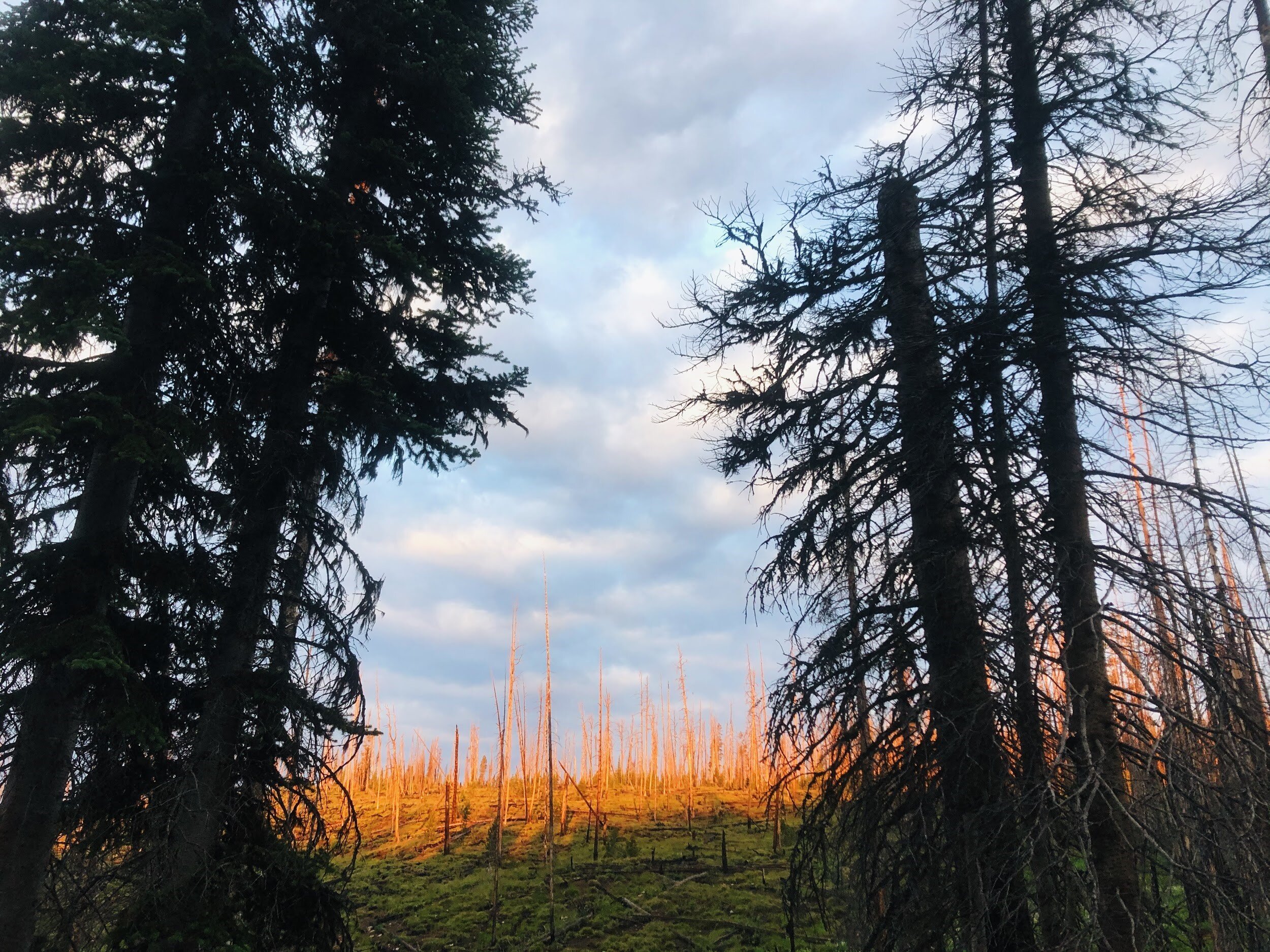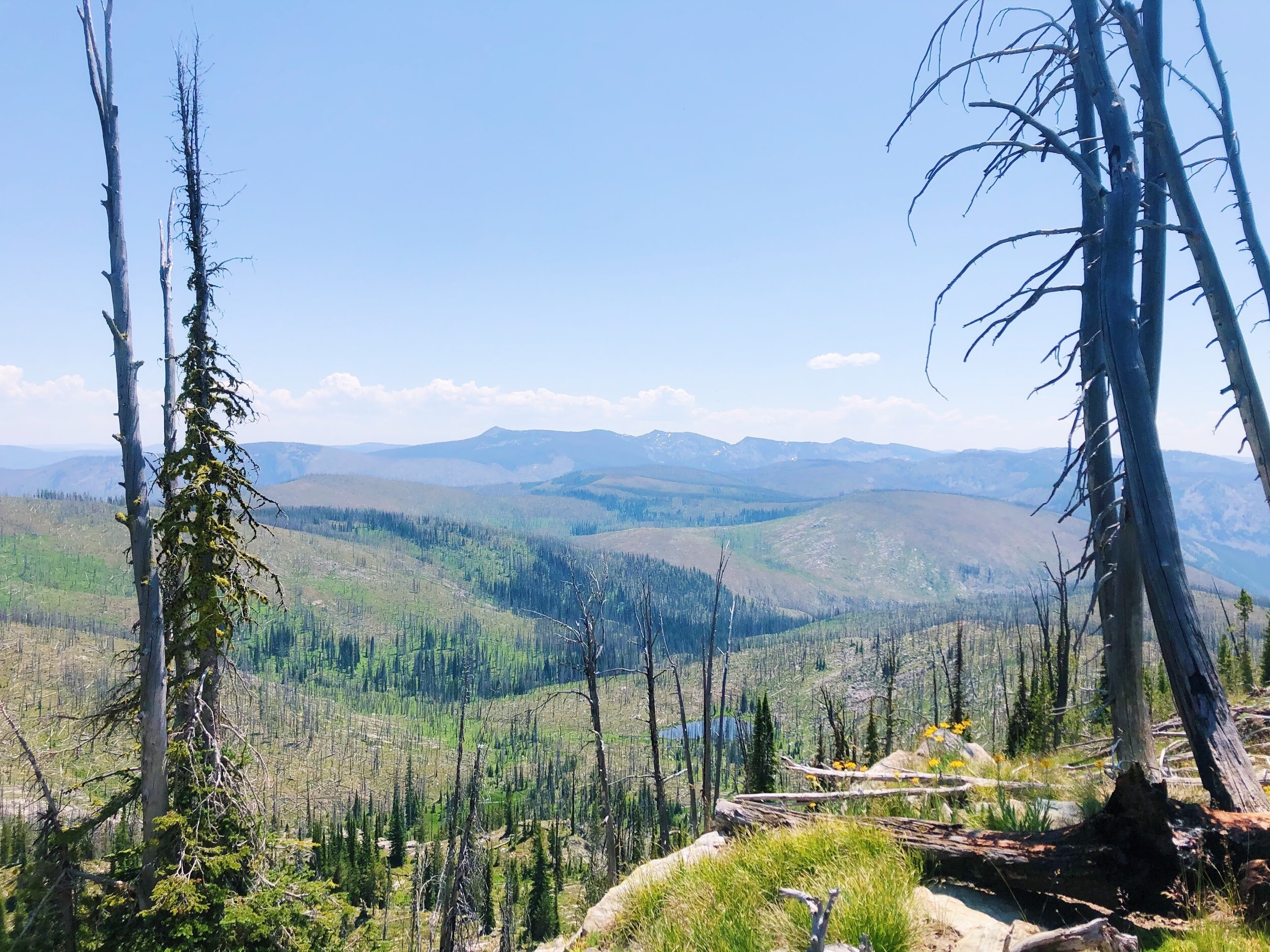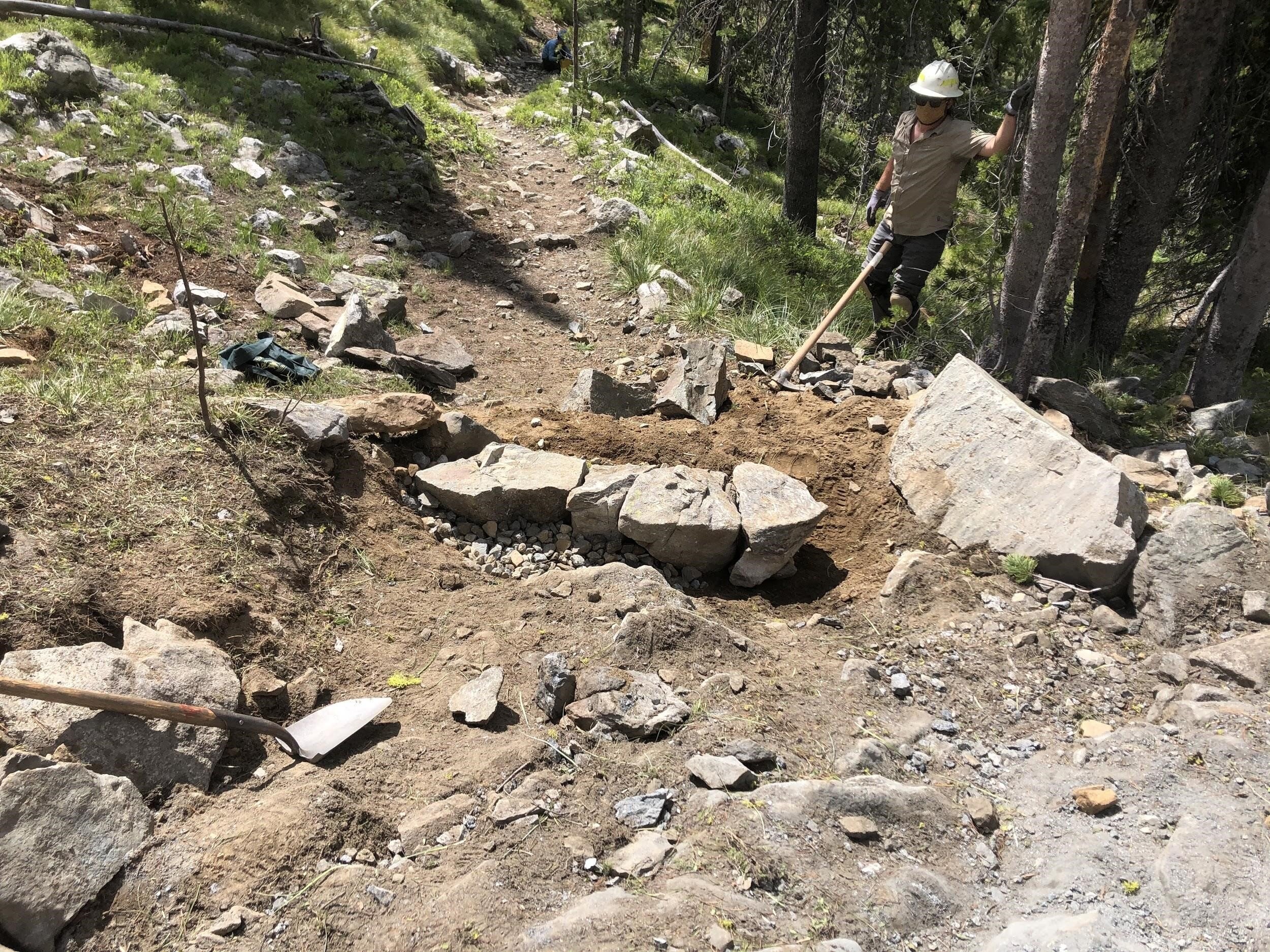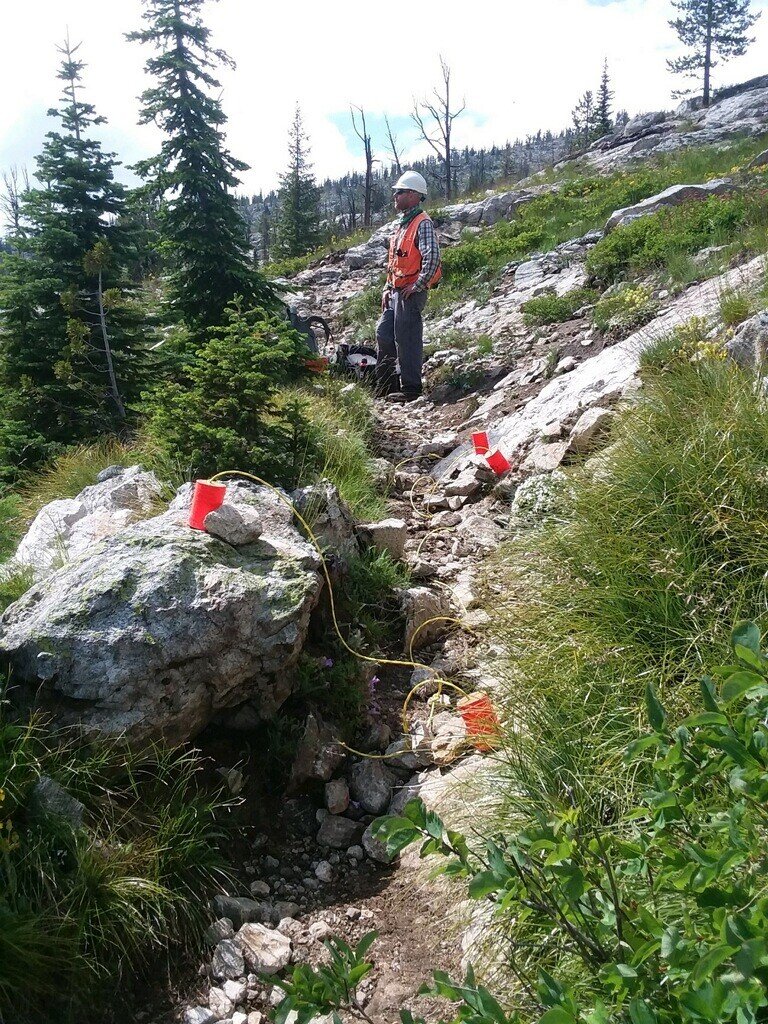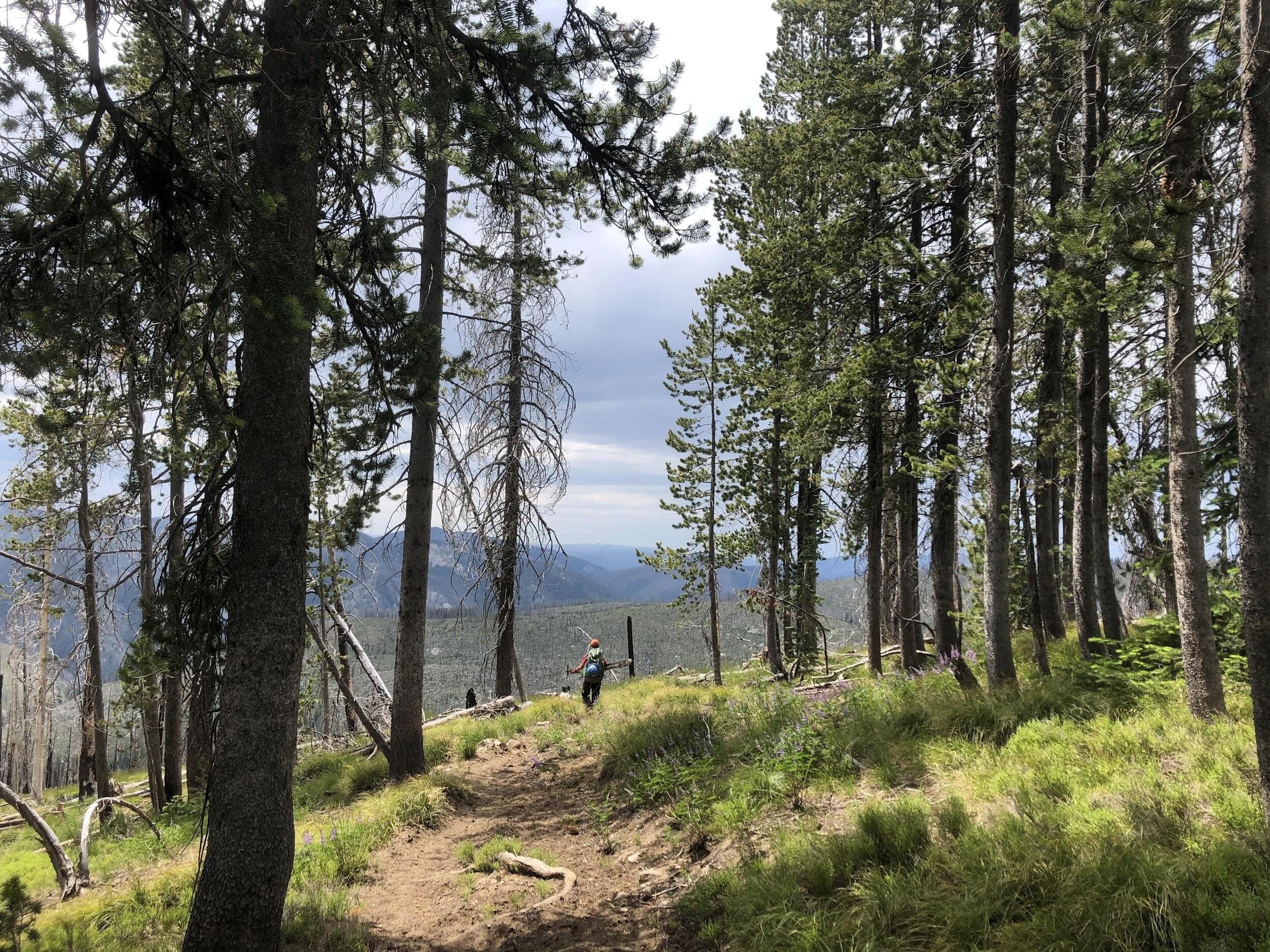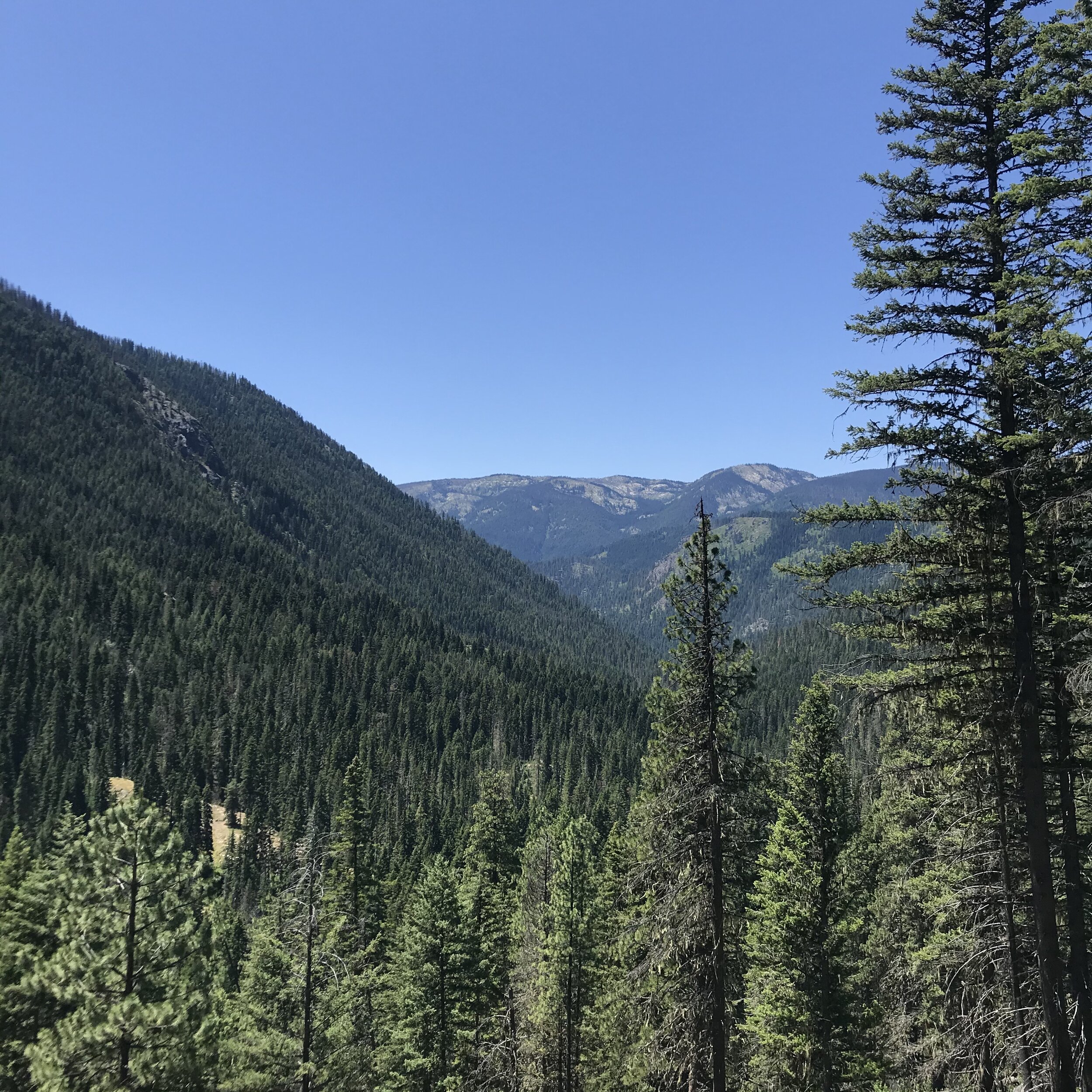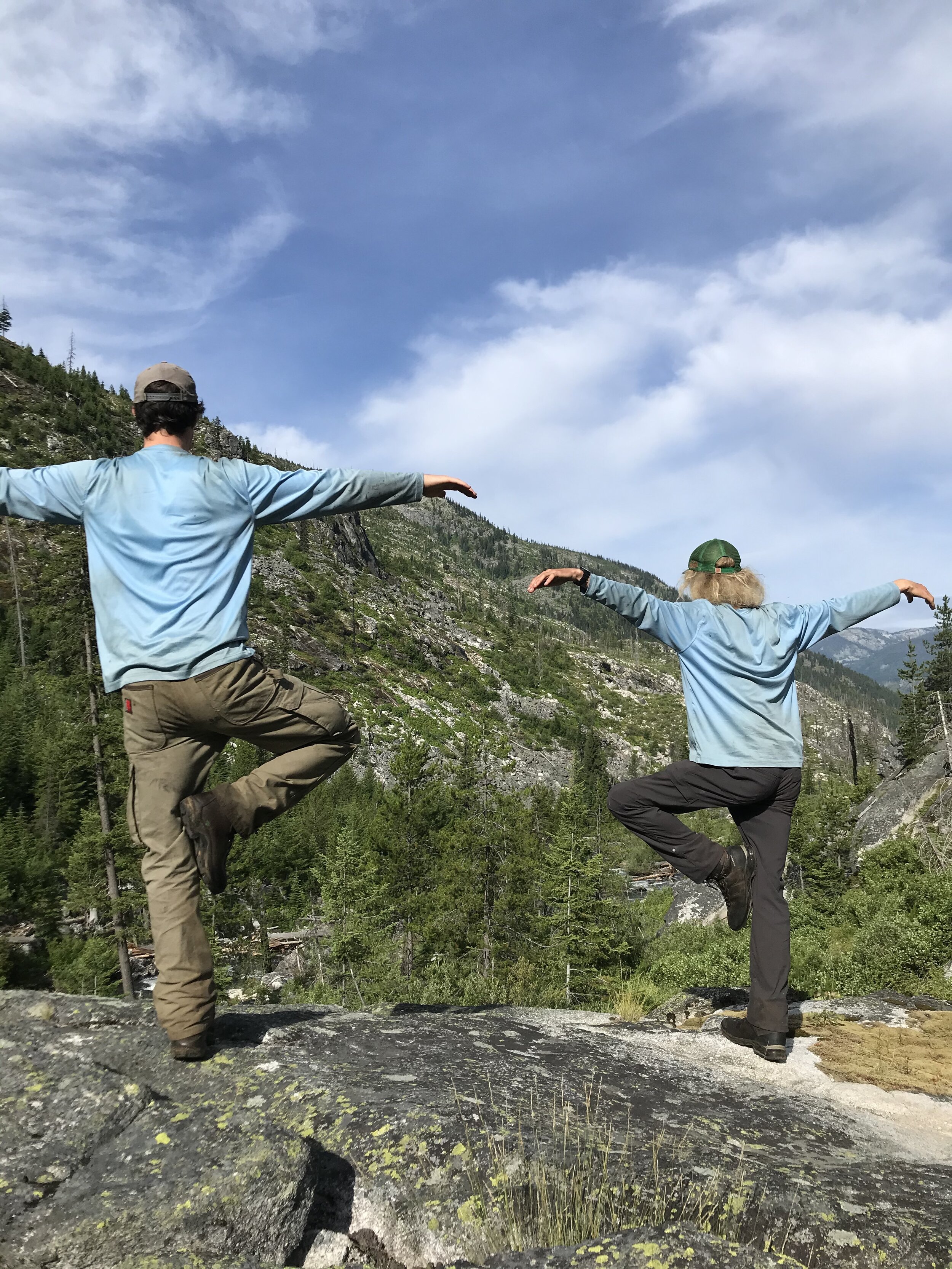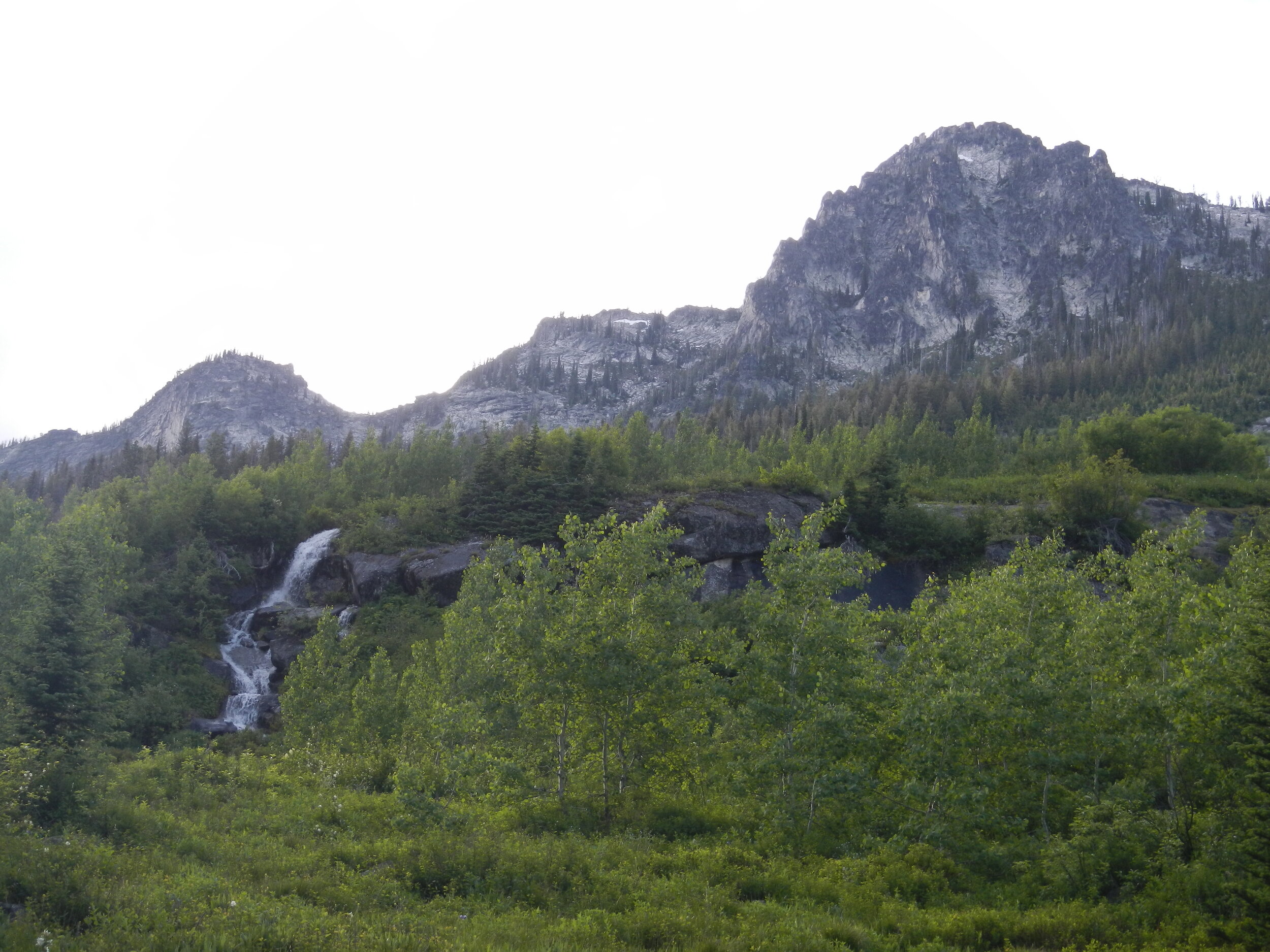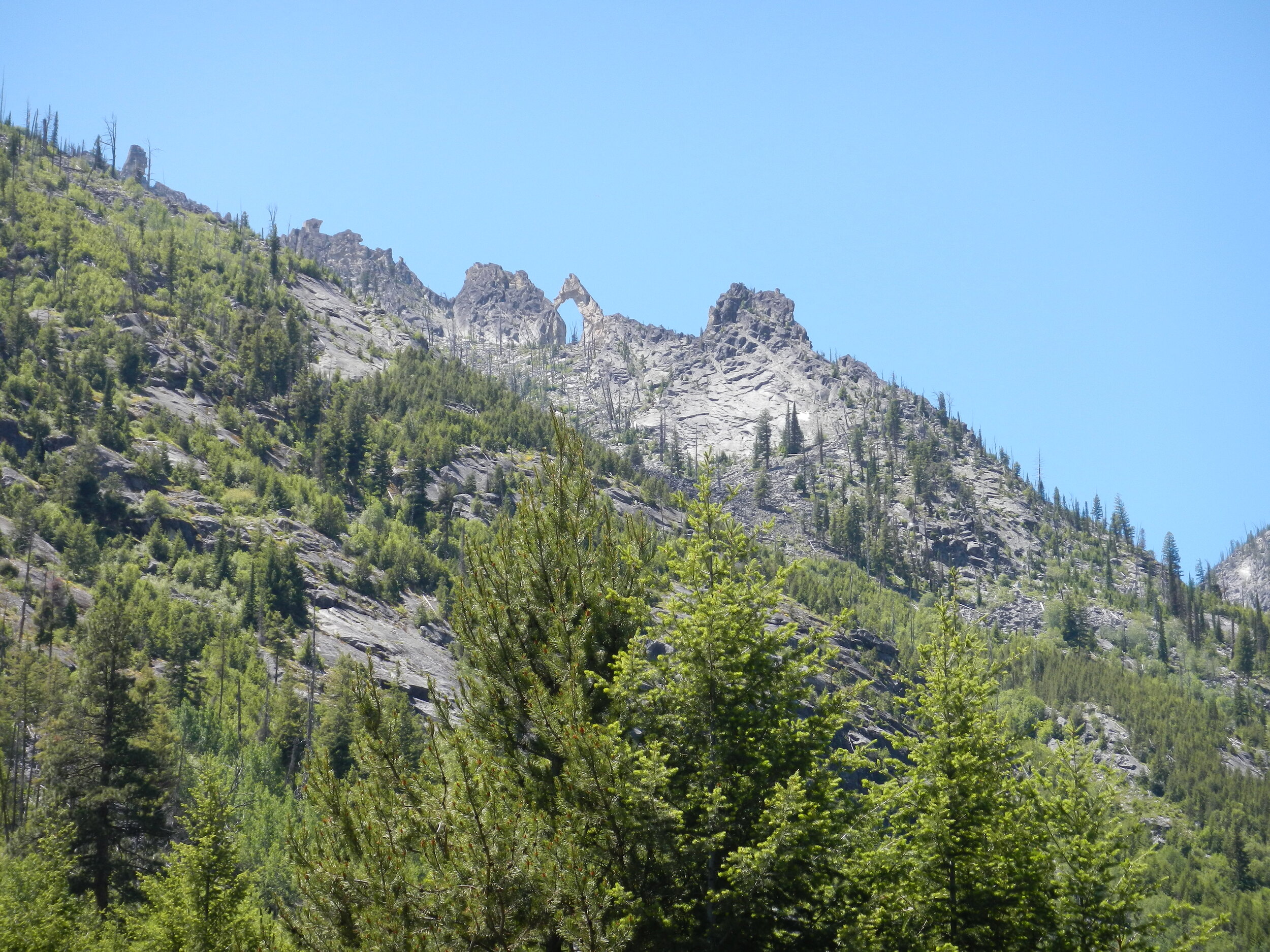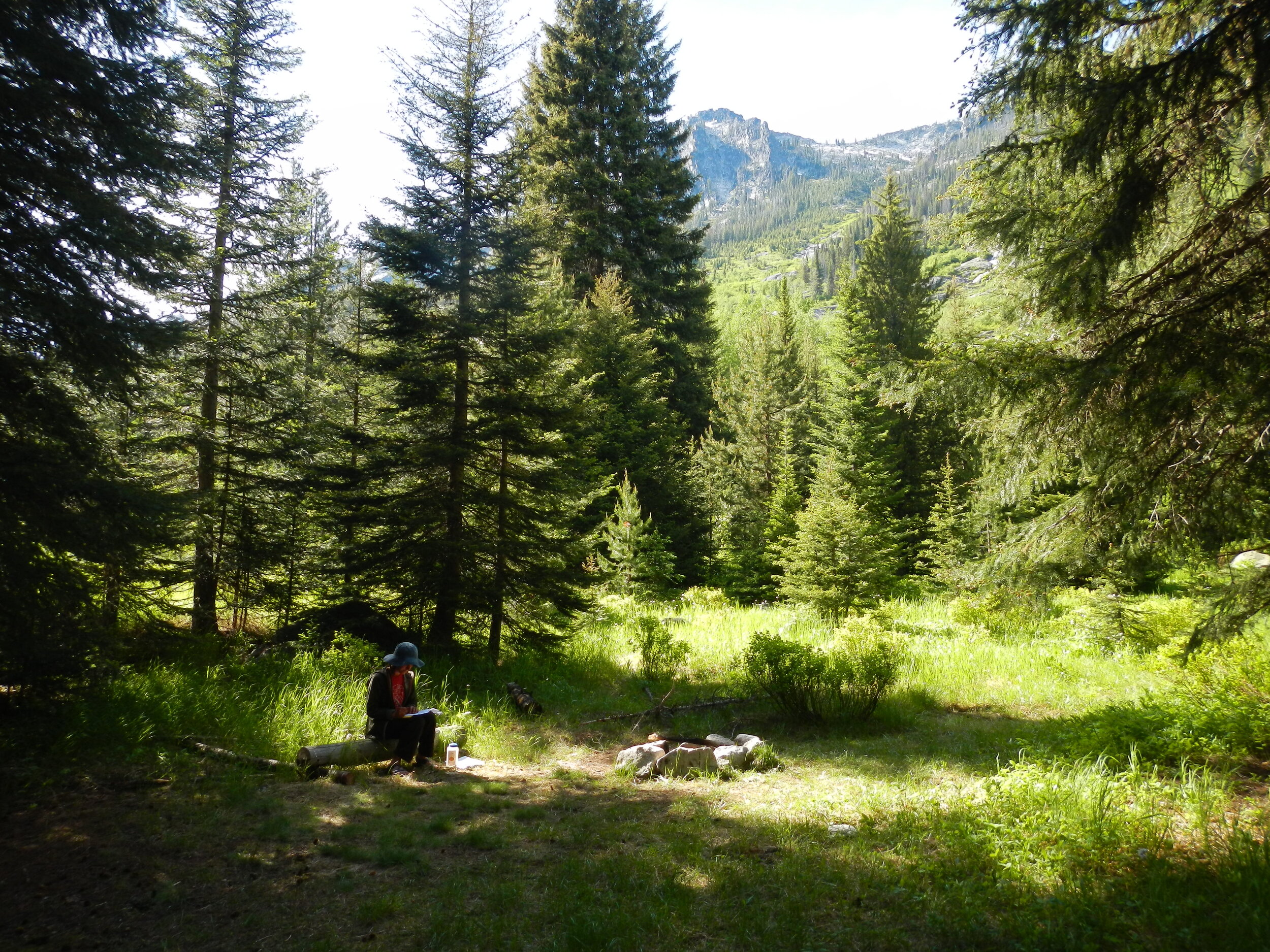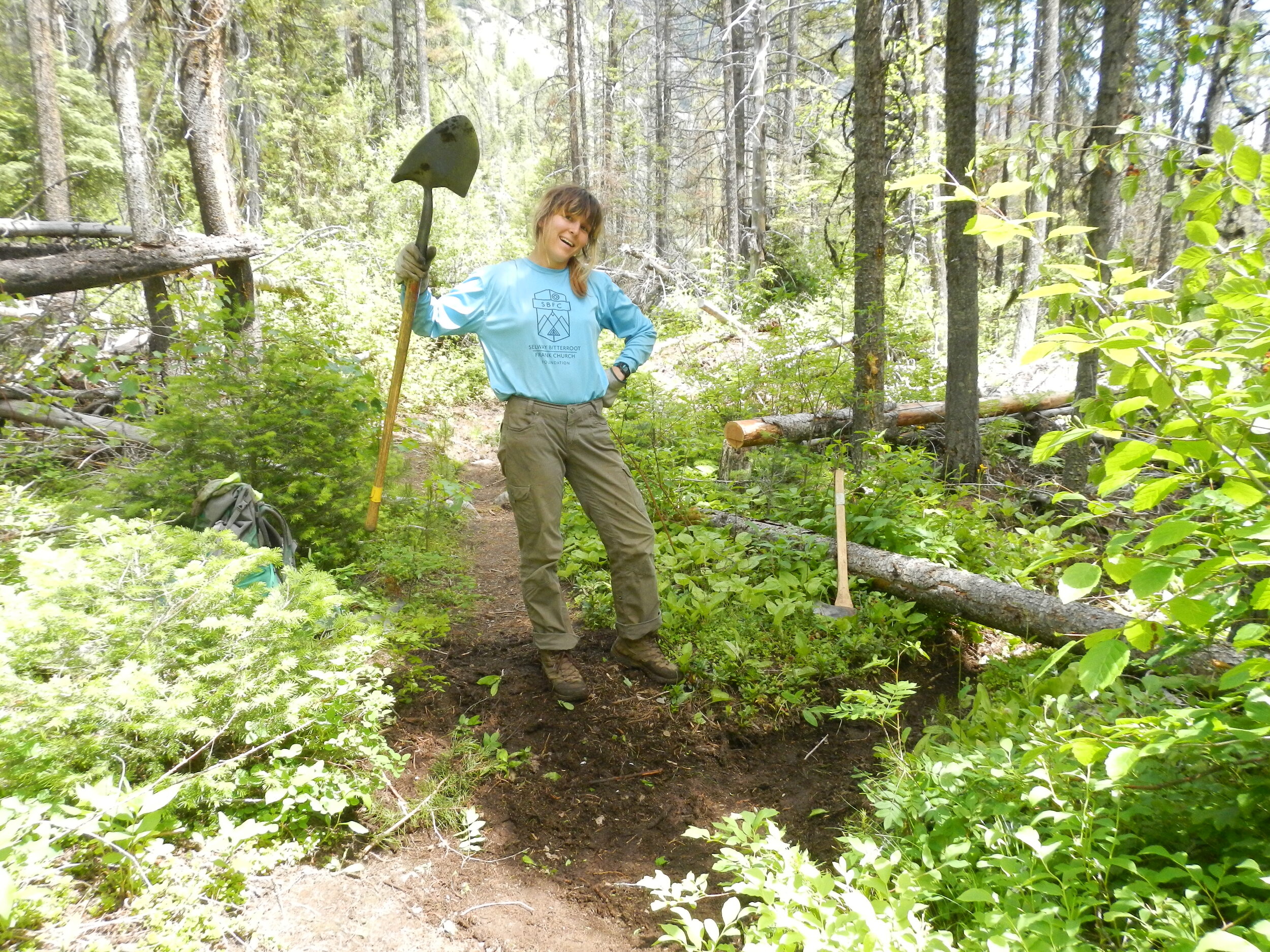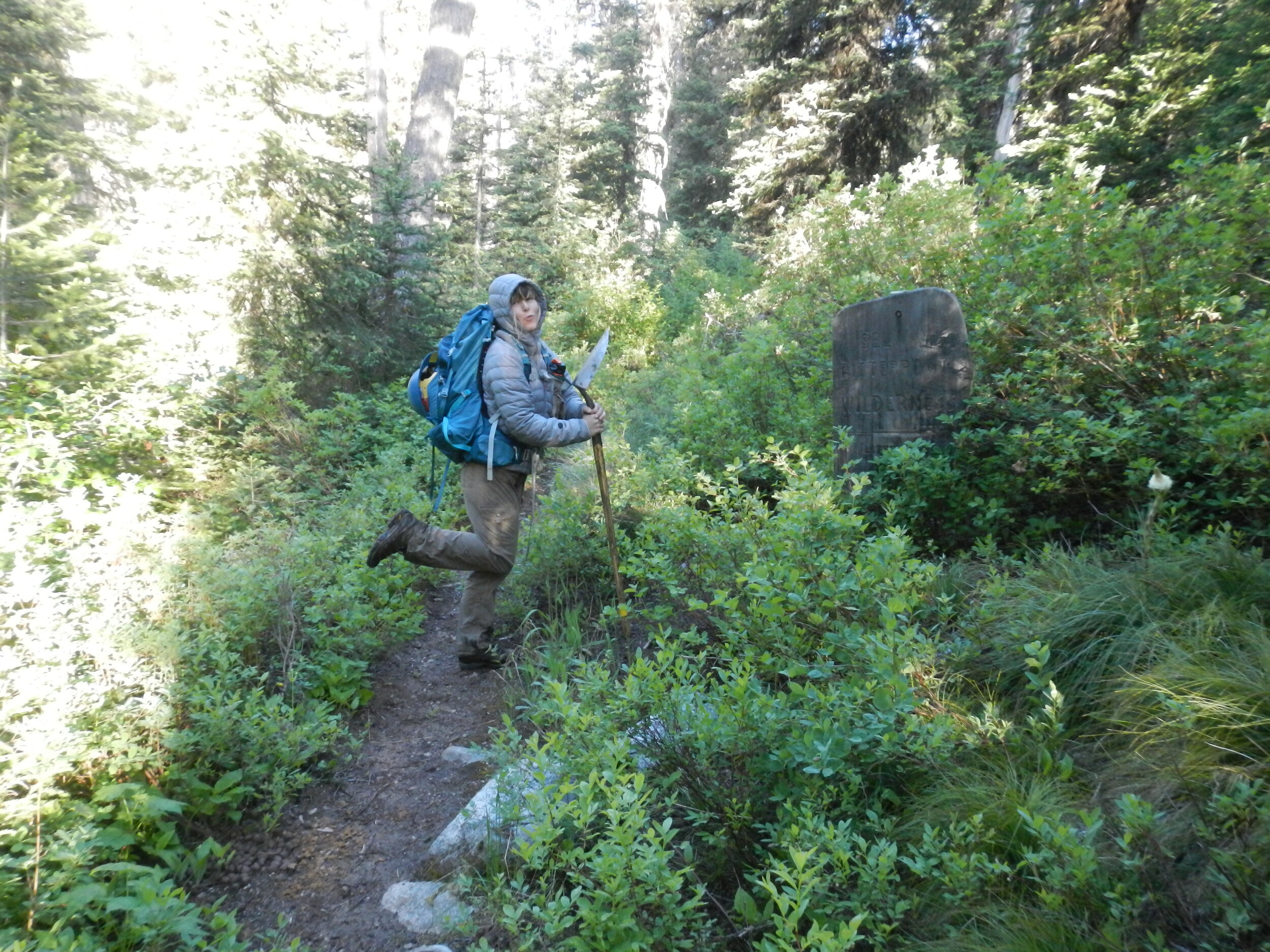Hitch #4 Waterfall Creek Trail #045 and Gant Ridge Trail #028
Josh Page
Frank Church Lead Wilderness Steward
August 5-12
Forest: Salmon-Challis NF
For the past three seasons, sometime between mid-July and August, I have been fortunate enough to spend a hitch or two among the sacred jagged spires, ridges and alpine lakes collectively known as the Bighorn Crags. My going there almost feels like an acknowledgement that the peak of summer has come. This year though, the Bighorn Crags were just the gateway to our main objective, the clearing of the Waterfall Creek Trail #045. From it's high point at the pass above Terrace Lakes, the #045 trail sits above 9,000 feet. Over the next 11 miles it almost continuously drops as it cascades down to it's terminus at the Middle Fork of the Salmon at 3'400 feet elevation. From August 6-10 our goal was to connect these two vastly different worlds with a small, uninterrupted ribbon of tread, free of obtrusions of trees and rocks.
After backpacking past folks at Welcome Lake and Heart Lake, we dropped up and over into the Terrace Lakes bowl-the headwaters of Waterfall Creek. For one glorious night, we had the luxury of setting up camp on the land bridge separating the uppermost and second uppermost lakes where we had unparalleled views and each had our own personal lake to bathe in (and a spare to boot). Once below the lakes, however, we quickly dropped into an old burn where snags stood as memorials to the fire, ready to fall at the slightest of breezes to their final resting place. As the trail switchbacked its way down through the skeleton forest, we cleared fallen trees with crosscuts, hand saws and axes and cleared debris from the many waterbars that we came across, eventually dropping to our camp, a small flat by Waterfall Creek relatively free of snags-by far the biggest threat to a sleeping trail crew (given our location). Over the next several days we meticulously made our way down the trail following a similar routine: Hike to the work site and our cached tools, clear the trail as far as we can, cache the tools at the new far point, hike back to camp, and bathe in two feet of cold, fast flowing creek water to try and wash away the soot of the burnt forest. Monday was our last day alloted to clearing this trail, we still had five miles to go if we were gonna clear the entire trail and it was beginning to look like our objective might not be met, but we had the right combination of grit, skill and luck to, finally at 3:30 pm, reach the Middle Fork of the Salmon. Knowing five miles and 3,000 feet of elevation gain were between us and camp, and given the heat of the sun beating down on us and radiating off of every surface, I could have cried tears of joy as my feet stepped into that cold, beautiful river. All too soon though, it was time to dry off and begin the long trek back towards camp, and the next day towards the Bighorn Crags. Monday ended up being a 13 hr workday, but we were all proud to have finished the trail. We finished the hitch working on the Gant Ridge trail and camped at Cathedral Lake, exhausted, but with our heads held high for all that we had accomplished before we headed back to the Bighorn Crags campground on Wednesday.
During these cautious times in the world, I am eternally grateful for the normalcy that I get to feel every time I go out on an eight-day hitch into the Frank Church River of No Return Wilderness. Once our small pod of me, Carly and Justine are out in the woods and away from the constant news and various reminders of how much our world has changed, I am reminded that nature is still more or less following it's typical patterns. Late July had arrived and the snows had melted enough that I could once more visit and work in the Bighorn Crags, doing our small part to clear trails for the adventurous souls that also are looking for solitude and calm in these stressful times. So for anyone looking for a wild ride, the Waterfall Creek Trail #045 is open top to bottom. I just have to recommend floating out from the bottom if you can swing it-that climb back to the Crags is not for the faint of heart.
Terrace Lakes from the pass
Carly & Justine cross cutting a tree from the Waterfall Creek #045 trail
Justine hiking along the Waterfall Creek #045 trail with the canyon of the Middle Fork of the Salmon in the background
My tent overlooking the uppermost of the Terrace Lakes
